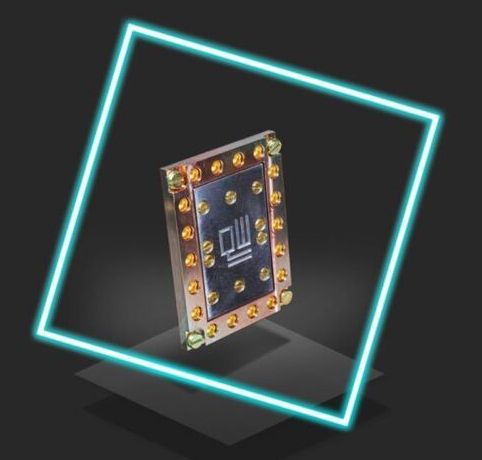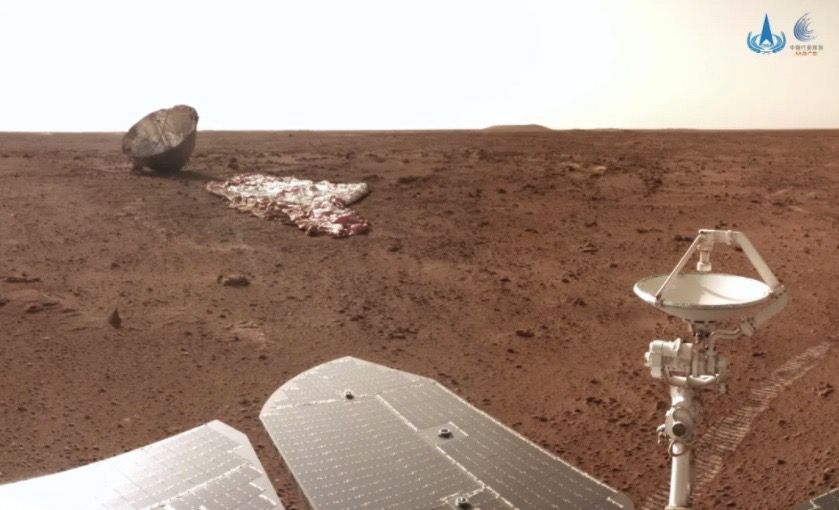A Quantum Leap Forward
Company from the Netherlands offer quantum processors to all interested parties.


Paper referenced in the video:

Investigating the relationship between diet, gut bacteria and systemic inflammation, a team of Stanford University researchers has found just a few weeks of following a diet rich in fermented foods can lead to improvements in microbiome diversity and reductions in inflammatory biomarkers.
The new research pitted a high-fiber diet against a diet with lots of fermented food. Thirty-six healthy adults were recruited and randomly assigned one of the two diets for 10 weeks.
“We wanted to conduct a proof-of-concept study that could test whether microbiota-targeted food could be an avenue for combatting the overwhelming rise in chronic inflammatory diseases,” explains Christopher Gardner, co-senior author on the new study.
Investing in the convergence of bioelectrics & biologics for regeneration & healing — howard J. leonhardt, founder, leonhardt ventures.
Howard Leonhardt is the Founder of Leonhardt Ventures, the world’s first Innovation Accelerator focused on the convergence of bioelectrics & biologics for organ regeneration and tissue healing.
Howard is an accomplished inventor and serial entrepreneur, with 21 U.S. patents, over 100 patent claims for products for treating cardiovascular disease, and has over 40 new patent claims pending. His TALENT (Taheri-Leonhardt) stent graft, developed in the early 1990′s, holds a leading world market share for repairing aortic aneurysms without surgery.
Howard’s inventions to date have been involved in treated over 500000 patients in 60 countries.
Howard is co-leader of Startup California and Founder and Chairman of The California Stock Exchange TM (Cal-X) preparing to be the first social good impact stock exchange currently operating the Cal-X 30 Social Good Impact fund. He founded Cal-X Crowdfund Connect, a crowdfunding campaign management company, and Cal-X Stars Business Accelerator, Inc., a business incubator and accelerator focused on cardiovascular life sciences and social good impact innovations.

NAD Coenzymes, Metabolic Stress, And Novel Preventative And Therapeutic Interventions — Dr. Charles Brenner, Ph.D., City of Hope.
Dr. Charles Brenner Ph.D. is the Alfred E Mann Family Foundation Chair in Diabetes and Cancer Metabolism, and Professor and Chair of the Department of Diabetes & Cancer Metabolism, at the City of Hope Comprehensive Cancer Center (https://www.cityofhope.org/faculty/charles-brenner).
With his Ph.D. in Cancer Biology from Stanford University, Dr. Brenner’s laboratory focuses on disturbances in nicotinamide adenine dinucleotide (NAD), the central catalyst of metabolism, in diseases and conditions of metabolic stress (https://www.cityofhope.org/charles-brenner-lab).
Among his most significant discoveries, Dr. Brenner identified nicotinamide riboside (NR) as a vitamin precursor of NAD, as well as a quantitative metabolomic technology that allowed him to discover that the NAD system is disturbed by many diseases and conditions of metabolic stress, including diabetes and cancer.
Specifically, Dr. Brenner and colleagues have found that in animal models of fatty liver, type 2 diabetes, diabetic and chemotherapeutic neuropathy, central brain injury, heart failure, postpartum and coronavirus infection, the NAD system is disturbed and that in these models, provision of nicotinamide riboside is highly protective.
Health Innovation Investment For The Future Generations — Dr. Aboubacar Kampo, MD, MPH — Director of Health Programs — UNICEF.
Dr. Aboubacar Kampo, MD, MPH is the Director of Health Programs at UNICEF (UN Headquarters) where he provides strategic leadership, management support and overall direction to UNICEF’s global health program.
UNICEF, also known as the United Nations Children’s Emergency Fund, is a United Nations agency responsible for providing humanitarian and developmental aid to children worldwide. The agency is among the most widespread and recognizable social welfare organizations in the world, with a presence in 192 countries and territories. UNICEF’s activities include providing immunizations and disease prevention, administering treatment for children and mothers with HIV, enhancing childhood and maternal nutrition, improving sanitation, promoting education, and providing emergency relief in response to disasters.
With over 20 years of experience in development aid and humanitarian assistance, Dr. Kampo has worked as a physician/surgeon in hospitals and clinics in rural and urban areas in Africa and Asia and has over 14 years’ experience in senior management position as Country Director, Senior Global Health Advisor, and Chief of Health and Nutrition with International NGOs and United Nations’ Agencies.
Dr. Kampo is a Medical Doctor and Public Health Specialist, passionate about using innovations to address real life community challenges and bridge the gap between communities and stakeholders.
From 3 day weekends to a future where all the jobs you do not want to do are automated, leaving you to spend your time as you desire.
Learning and research.
Sport and recreation.
Tourism and adventure.
Or whatever takes your fancy…
Well 4 day working weeks are already arriving, and I then show the rate of break throughs in Artificial Intelligence in just the last decade, which are removing the repetition and boredom from our jobs, so we can spend more time on the bits that matter and that are of interest.
What do you think?
Let us know your thoughts in the comments.
If you want to see more about the decade of disruption that is heading our way, then check out this next…
Iceland study.

We have a much better understanding of physics than we do of consciousness. I consider ways in which intrinsically mental aspects of fundamental ontology might induce modifications of the known laws of physics, or whether they could be relevant to accounting for consciousness if no such modifications exist. I suggest that our current knowledge of physics should make us skeptical of hypothetical modifications of the known rules, and that without such modifications it’s hard to imagine how intrinsically mental aspects could play a useful explanatory role. Draft version of a paper submitted to Journal of Consciousness Studies, special issue responding to Philip Goff’s Galileo’s Error: Foundations for a New Science of Consciousness.